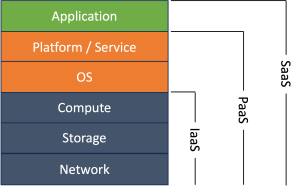If there is one piece of advice I can pass on to anyone – it is don’t wait to start preparing for your next role. No matter where you are in your career, your job will constantly expose you to new things and those new things will change your perspective, give you experience and make you grow in ways you can’t anticipate. Embrace the growth, but also have the foresight to set yourself up for success no matter where your career takes you. This post offers several lessons learned about how to constantly position yourself for success and most importantly – don’t wait to prepare for your next role.
Start With The Interview
Preparing for your next role begins the second you start interviewing for your current role. The interview process is a time for both the company and the candidate to ask questions. The process will reveal areas of growth on both sides and candidates should embrace the areas they are less confident in or need to work on. This will set them on a path for mastering those skills and to be able to use their current role as a stepping stone to the next role. Candidates can also use the interview to ask how the company views the role evolving and what is the path for promotion (either title or job level)?
During the interview process or after landing the job, candidates should evaluate and learn the skills exhibited by their immediate manager or the senior member of their team. Have conversations with these individuals and make a list of skills you need to master if you were promoted to their role. The time to work on new skills is now, not when a role or promotion is offered. By that time it is too late! Whether you are aiming for a promotion, looking for a new job or if you get laid off and need to find a new position, don’t wait to prepare until you need a job because you will be behind the curve.
Get Certifications
If you are targeting a new role or promotion, look at the qualifications and certifications of individuals in those roles. LinkedIn is a great place to do research on what is needed for career progression. Evaluate the certifications, degrees and experience of people who have the job title you want. Also review job postings to see what companies are looking for. Certifications take time, money and effort so plan accordingly. If your company offers to pay for these certifications take full advantage and build it into your performance goals. Make a plan to obtain the necessary certifications and qualifications so you can position yourself and effectively compete for the role you want.
Demonstrate Expertise
In addition to certifications you also need to demonstrate expertise. When doing your research about your next job, don’t just look at the job title. Look at the skills they require, the company size and the industry. Learn the skills, learn about the company and learn about the industry they operate in. Demonstrate expertise in these areas by writing blog posts, submitting conference talks, participating in local chapter events or participating in a podcast. You can even use popular social media platforms to generate your own content. The point is to build up a body of work that demonstrates your knowledge and most importantly to create an independent profile, separate from your job that represents who you are and what you can do. Think of it as a living resume.
Network
Networking continues to be one of the most powerful ways to advance your career. Attending conferences, chapter meetups, get togethers, and other social events puts a face to a name and builds rapport. This can be invaluable when looking for your next job, but just like everything else it takes time and effort to network.
Outside of the meetups, there are a few other recommendations I have for networking. First, don’t target the people that have the job you want, target the people that hire for the job you want. For example, if you want to be the CISO at a publicly traded company, do research on who the current CISO reports to and then figure out a way to connect with that person so you are on their radar. Second, make a list of companies that you would like to work for and research people at those companies. Start connecting and networking with those people either virtually or physically. Ask for a quick intro call to introduce yourself and learn about their role. Lastly, connect with recruiters that hire for the position you are targeting. Set up an intro call to get their perspective on the market and how you can position yourself better. This will put you on their radar as a candidate when new positions come their way. This all takes time and effort, but if you set a small goal to meet one new person a month, this can quickly lead to a lot of new people in your network by the time you are ready to make a move.
Don’t target the people that have the job you want, target the people that hire for the job you want.
Challenge Yourself
My last piece of advice is to constantly challenge yourself. First, expand your experience by learning about different aspects of the business that will help you to be successful in your next role. Learning about other aspects of the business such as finance, HR, product, sales, engineering, etc. will make you more effective in your current role and give you valuable experience for your next role. It will also generate empathy on both sides, which can pay dividends towards making your next security project a success.
Second, don’t focus on team size. Instead, focus on scope and impact of your role. You may think it is better to have an extremely large team, and while this can be good experience, it doesn’t really tell people anything about what you accomplished. Instead, focus on developing and articulating the scope and impact of your role. For a CISO and the security organization, this means becoming a trusted advisor for the rest of the business and translating your successes into career highlights.
This brings us to the last piece of advice I have, which is to keep a running “brag sheet” of your accomplishments. As you progress in your current role, write down your accomplishments and the things you learn that can be useful in future roles. Continually update your resume and social media profiles to capture these achievements so you don’t have to try and remember them when a new opportunity presents itself. Keeping your resume continually updated means it will be fresh and ready to go when a recruiter reaches out or your dream role opens up.
Wrapping Up
The biggest thing you should take away from this post is to continually improve yourself by gaining experience and credentials that will be useful in your next position. Have the foresight to think about your current position and the moves it will take to get you to your dream role. Start planning for that role today because it takes time to build up the right skills, credentials and expertise for your next job.











